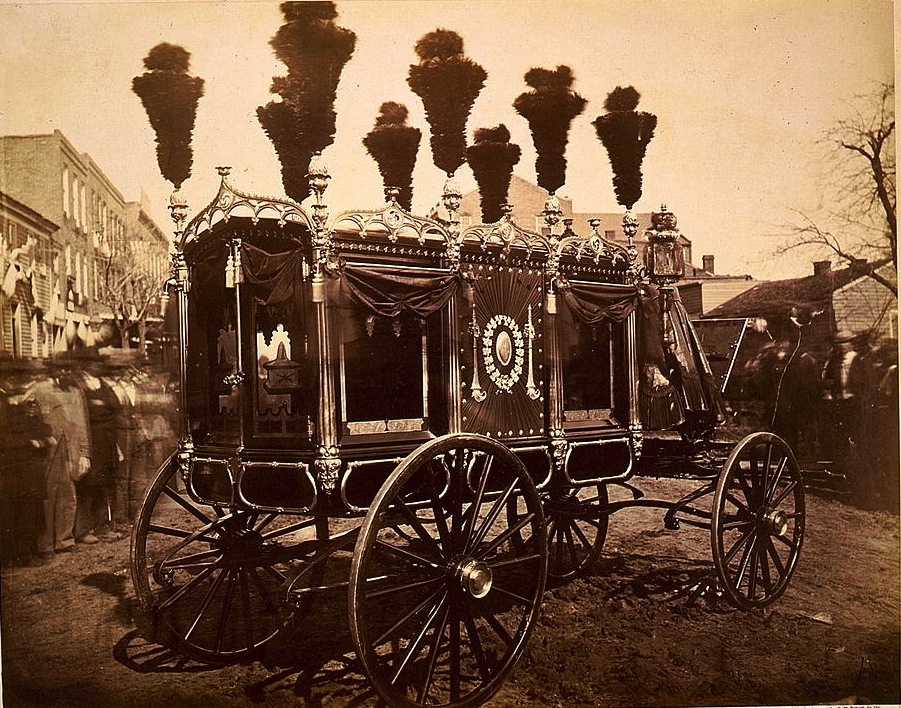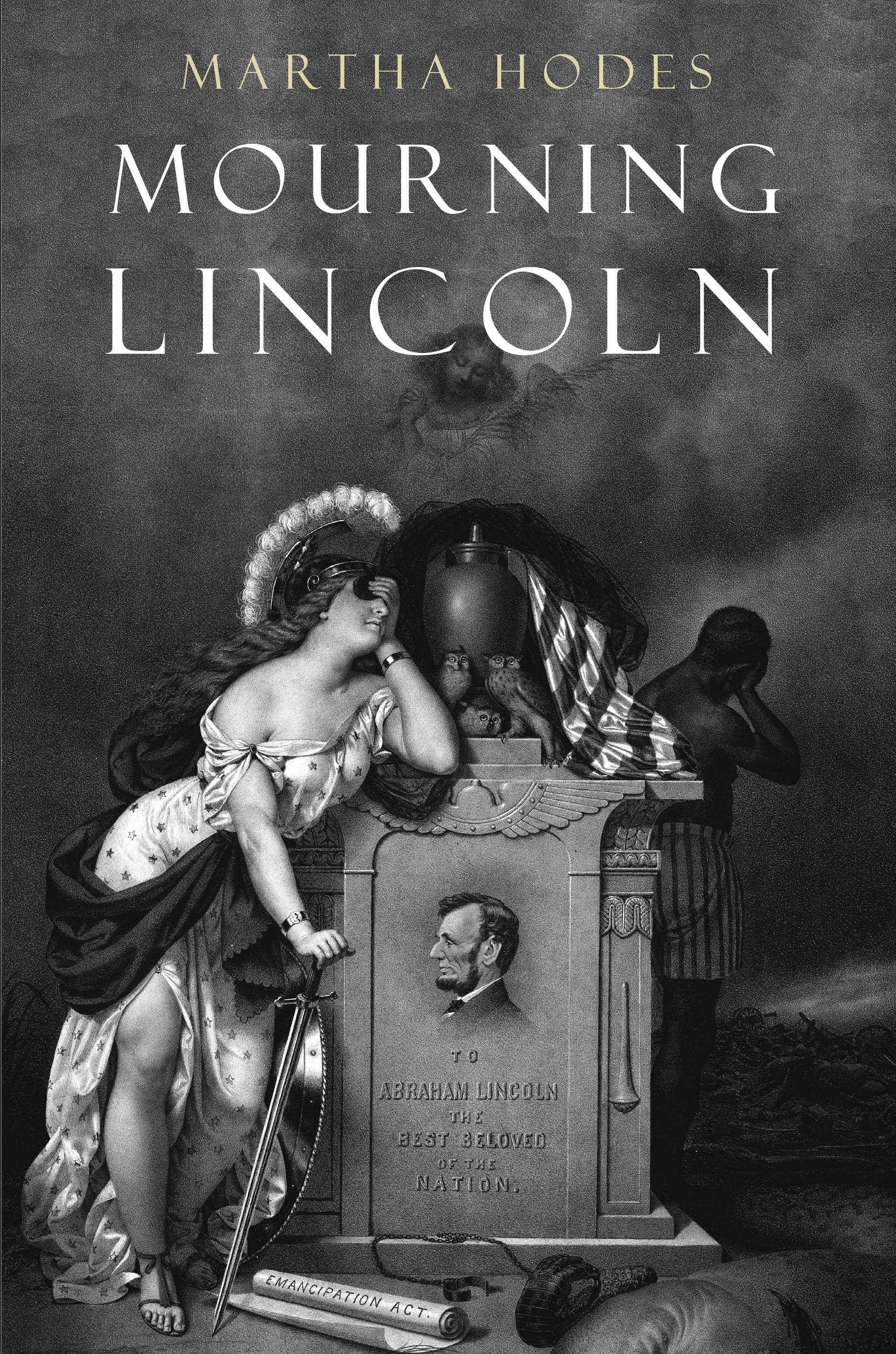By Martha Hodes (Guest Contributor)
Awe-inspiring, somber, sorrowful: That’s how mourners imagined the forthcoming funeral of President Abraham Lincoln, in the terrible hours and days after the nation’s first presidential assassination. The Union had just won the Civil War when the aggrieved actor, John Wilkes Booth, fired his pistol at Ford’s Theatre on April 14, 1865.
T he funeral would begin on April 18, with three days of rituals in the capital. Lincoln’s body would then travel north and west on an extravagant funeral train, to be removed for elaborate services in ten cities along the way. After two weeks and nearly 1700 miles, the slain president would be laid to rest in his hometown of Springfield, Illinois.
he funeral would begin on April 18, with three days of rituals in the capital. Lincoln’s body would then travel north and west on an extravagant funeral train, to be removed for elaborate services in ten cities along the way. After two weeks and nearly 1700 miles, the slain president would be laid to rest in his hometown of Springfield, Illinois.
For many spectators, it was as profound and magnificent as they had envisioned. But not for everyone. Letters and diaries from the spring of 1865 reveal another side of the experience. Mourners “roasted in the sun,” fainted in the crowds, and were “jammed almost to death,” as guards ruthlessly rushed them past the open coffin. Those who managed to linger a moment beside the body saw a face rapidly decomposing, unprotected by rudimentary embalming techniques.
The mobbed processions caused consternation, too. Pickpockets helped themselves to cash and watches. Men groped women. Drenching rain occasioned the lifting of thousands of umbrellas. Descending darkness obscured the majestic catafalque, and the bands played too softly for many to hear the music.
Nor did all mourners behave as other mourners wanted them to. “There was nothing solemn or touching in the whole thing,” a New York City viewer scoffed, noticing “gaily dressed” women with “smiling faces.” People laughed at dawdling marchers. Boys cheered when the presidential carriage finally came into view. For a woman watching the Philadelphia procession, it was “entirely ludicrous,” the whole thing a “superficial, irreverent farce.”
Bigger troubles intruded, too. Officials tried to block African Americans from joining the parades, and guards directed black people to the ends of lines. Irish mourners fought with African Americans, and Protestants ridiculed Catholics and Jews.
Nor did the shocking assassination bring together Union and Confederate. Vanquished southerners who read about the funeral train in the newspapers found the whole display disgusting, all “gas & bombast,” with Yankees hauling Lincoln’s “miserable old carcass” all over the country. In turn, many of Lincoln’s mourners looked beyond Booth to hold the entire Confederate leadership and the institution of slavery responsible for the crime.
Far from uniformly awe-inspiring, the disappointments of President Lincoln’s funeral portended tremendous conflicts for the newly reunited, but utterly unreconciled, post-Civil War nation.
 Martha Hodes is a Professor of History at New York University, and the author, most recently, of Mourning Lincoln. Her other books include The Sea Captain’s Wife: A True Story of Love, Race, and War in the Nineteenth-Century and White Women, Black Men: Illicit Sex in the Nineteenth-Century South.
Martha Hodes is a Professor of History at New York University, and the author, most recently, of Mourning Lincoln. Her other books include The Sea Captain’s Wife: A True Story of Love, Race, and War in the Nineteenth-Century and White Women, Black Men: Illicit Sex in the Nineteenth-Century South.
